 Compost teas provide reduciton of grey mold (Botyrtis cinera Pers.) on tomato plants April 2024 European Journal of Plant Pathology Link Here Yes, we know we have posted about compost tea and its ability to disrupt Botrytis' moldy maneuvers before, but we can't help ourselves to do it again when there's such excellent news out there. This time the interesting info comes from the polite people of Canada at the Carleton University in Ottawa. The plant science researchers wanted to see if the different types of compost had an effect on the inhibition of the fungal pathogen Botrytis. The composts tested were: Cow manure, shrimp processing waste, garden/leaves/straw blend, and garden waste. The scientists performed several telling tests. In one, the compost teas were sterilized using both hot and cold processes. The sterilized teas were then applied to colonies of growing Botrytis. . Guess what, they didn't work. The teas only had suppressive effects when they were alive (or maybe the sterilization process damaged the anti-fungal compounds produced by the microbes....we'll need more testing). This tells us that compost tea needs to be fresh and living (or at least no sterilized) in order to get the anti-fungal benefit. In another experiment, the teas were used as a foliar spray on leaves that had been infected with the disease. They found "When used as foliar sprays, bovine manure (BOV), shrimp (SHR), and garden-leaves-straw (GLS) compost teas effectively reduced disease severity for six weeks" The greatest delay in infection expansion was found with the Cow Manure, Garden/Leaf/Straw, and Garden Waste composts. Notably this was done with a 10x dilution (1 gallon of tea in 9 gallons of water, this is TeaLAB's recommended dilution for maximum efficiency). Interestingly, the cow, shrimp, and garden/leaf/straw teas did not perform any better when less dilute, meaning diluting it is both efficient and effective. Lastly, the microbial populations were counted and identified. The types and numbers varied between teas, and there was no correlation with the inhibitory effects. This tells us that whatever type of compost you have, it's going to help reduce Botyrtis disease severity. If you are anything like us here at TeaLAB, gardeners that don't like to see our fruits and flowers wasted to fungal disease, then you're bouncing off the walls right now. Tell your family, friends, neighbors, community networks, professional associates, person in line behind you at the supermarket: Compost tea works!!! Thanks Canadian scientists! We owe you some delicious, healthy, organically grown strawberries!
0 Comments
 Soil amendment with insect frass and exuviae affects rhizosphere bacterial community, shoot growth and carbon/nitrogen ratio of a brassicaceous plant Plant And Soil October 2023 Link Here More great news about insect poo!!! Frass, as it's called in more astute circles, is the excrement of bugs. Similar to worm castings, frass is full of useful nutrition, beneficial microbes, and plant growth promoting compounds. A group of insect-centric researchers in the Netherlands wanted to see if different types of frass would affect plant growth differently. In this study, three types of frass were used to grow Brussels Sprouts, which were compared to Brussels Sprouts grown with synthetic fertilizer. To do this, the researchers grew the plants using either Meal Worm, House Cricket, or Black Soldier Fly Larvae frass, and compared it to a synthetic fertilizer with a similar nitrogen content. The plants were let to grow for 8 weeks, and then several growth parameters were measured, and the bacterial community in the soil was assessed for who and how many were there. After 8 weeks, the researchers found that the plants grown with frass performed just as well as the synthetic fertilizers, in fact, the cricket frass performed better! Even more interestingly, the microbial communities in the frass soils had a greater amount of bacteria known for their plant growth promoting capabilities. The conclusion is: frass works as good or better than synthetic fertilizer, and has the added bonus of increasing the population of beneficial soil bacteria. The shortcoming of this study is that the researchers did not cook the Brussels Sprouts with brown sugar and bacon to determine if there were differences in tasty-ness (recipe here). Thanks to the bug-nerd Netherland scientists that think this stuff is as interesting as we do. 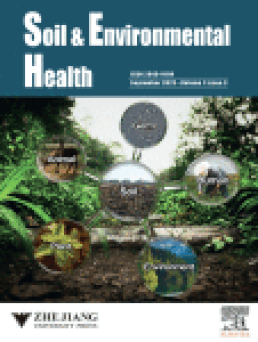 Biochar as a sustainable tool for improving the health of salt-affected soils Soil & Environmental Health September 2023 Link Here Usually these blog posts break down specific experiments on things like compost tea, insect frass, cover crops, or any of the other fun stuff we like to do here at TeaLAB. This post however, is a summary of summaries. The "literature review" was done by a group of Eco-conscious scientists out of China who wanted to look at multiple studies on Biochar and identify any overall trends. Specifically they were looking for information on how Biochar affected sodium afflicted soils, though in their searching they found many other benefits. According to the research, Biochar addition significantly improved soil physico-chemical properties by
That's quite a bit of benefit from adding some stable carbon to the soil. A little biochar in the garden sure gets a lot done. Thanks to all the scientists that made this enlightening information available. (if you are reading this wondering "what is Biochar?", reach out with an email to [email protected] for a quick overview) 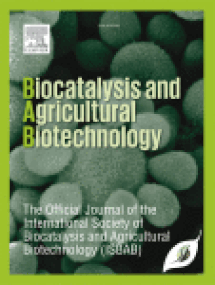 Frass from yellow mealworm (Tenebrio molitor) as plant fertilizer and defense priming agent Biocatalysis and Agricultural Biotechnology October 2023 Link Here If you have been following TeaLAB for the past decade you know we are big on frass. It's a great source of nutrition, microbes, and plant stimulating compounds. And just in time for the spring season, there is some new research out that further indicates what we already know, frass is good stuff. A group of researchers out of Norway wanted to know if frass (from the humble meal worm, Tenebrio molitor, the same frass we supply at TeaLAB) would induce plant immune defenses. To do this they grew the model research plant, Arabidopsis thaliana, with and without the addition of insect frass. They then infected the plants with Grey Mold, Botrytis cinerea. Then they collected RNA from the plants (which is the temporary copy of DNA that is made when genes are turned on in order to make the proteins associated with that section of DNA). Because Arabidopsis has been researched so extensively, the genes that are used for immune defense are well known. The researchers simply (well, maybe simple isn't the word) looked to see if the RNA that was present in the frass-fertilized matched up with the known immune defense DNA segments. The researchers found that the application of frass increased expression of the investigated genes compared to the control treatments. Furthermore, plants that were also inoculated with the disease causing Botrytis, showed even more elevated gene expression. This indicates that the application of insect frass primes the plant for high immune response when disease is actually present. This is yet another study that shows us these natural, organic, fertilizers have an important place in the agriculture and gardening world. Oh yeah, the study also showed that frass contains and contributes a good amount of fertilizing nutrition as well. Check out the link above to learn more. TeaLAB, better gardening through biology!  Goldenseal (Hydrastis canadensis L.) Extracts Inhibit the Growth of Fungal Isolates Associated with American Ginseng (Panax quinquefolius L.) Molecules January 2024 Link Here Ginseng is a valuable crop used as a holistic medicine to improve brain health, immune function, blood sugar regulation, sexual health, and slow the aging process through its high antioxidant activity. The one thing this root crop is not great at is fighting off fungal pathogens during its long (4-6+ year) growing season. Ginseng is susceptible to many of the same culprits we see on the other crops we know and love. For instance, Alternaria and Fusarium are commonly known to ire the gentlest of gardeners. Enter Goldenseal. Goldenseal is a common herbaceous plant that humans use for its anti-bacterial and anti-inflammatory health promoting benefits. Goldenseal contains a compound called Berberine which has antibiotic properties. With this knowledge, a group of researchers from Middle Tennessee State University looked to see if this north American native buttercup relative, also harvested as a root crop, would fend off fungal diseases in Ginseng. To do this, the researchers made simple extracts of Goldenseal by soaking dried root and leaf material in either water or alcohol (ethanol), then taking that extract and adding it to the jelly-like agar in petri dishes. The extract solution was added to the agar at 0% (control), 0.25%, 0.50%, 1.0%, and 2.0%. The petri dishes were then inoculated with one of three fungal pathogens, Alternaria, Fusarium, or Pestalotiopsis. The fungal disease were then allowed to grow, and the researchers documented how their growth rates. And guess what..... it worked!!! The 2% Goldenseal extract was able to significantly reduce the growth of the pathogens. The ethanol extract outperformed the water extract, but both showed anti-fungal action. Alternaria growth was reduced by 86%, and Fusarium by 95%!!! The other disease, which is a new one to me, was reduced by 39% which is better than nothing. The researchers looked at the shape of the fungal root systems, and saw that hyphal morphology was indeed affected by the ginseng extract (in disease causing fungi, hyphae are used to enter and infect plants, if their shape is modified, so is their function). This study further shows that mother nature provides the tools that can lead us to a more sustainable future, we just have to find them! Goldenseal extract is one of many bioactive compounds that we can use to help grow without using toxifying synthetic fungicides. For more details on this interesting study, including how to make the extract, click the Like Here button above. Thanks Tennessee scientists!!!! 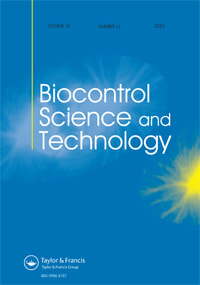 Microbial compost tea properties affect suppression of strawberry grey mould (Botrytis cinerea Pers.) November 2022 Link Here Great news in the strawberry cultivation world, recent research shows that compost tea reduces the severity of the plant disease known as Grey Mold. Grey Mold is caused by the fungal pathogen Botrytis cinerea and affects not only strawberries, but seemingly every other crop out there. From cucumbers to chrysanthemums, grey mold will infect and devastate everything from seedlings to finishing fruit. Finding a safe, effective, and low cost control is paramount to cultivation operations big and small. Enter compost tea. The microbial soup created in a well brewed tea contains live bacteria, some of which produce known anti-fungal compounds. With this knowledge, a group of researchers from Canada wanted to know if using compost tea on strawberries would improve yields and quality. To do this they made compost tea with several types of compost: Forrest Residues, Fishery Waste, Sheep Manure, Shrimp Processing Byproduct, and Vermicompost (The details as to the application and frequency are not in the research article abstract, however it can be assumed it was a foliar application at least one time). The application of these teas reduced the growth of several pathogens from 45-73% (reads: reduced losses on average by over 50%!!!). The strawberry-centric scientists wanted to know if the tea needed to be alive to provide the beneficial effect. The researchers sterilized the tea with heat, and then saw that the sterilized tea did not help to reduce the disease. This shows that's it is the living microbes, or their heat sensitive anti-fungal compounds, that are providing the benefits. Next, they wondered if bacterial population counts in the tea related to its effectiveness against the fungal diseases. Interestingly, it didn't! Which is something of a surprise. This means that even low numbers, or a diluted tea, has beneficial effect. Lastly, the team isolated several bacteria and evaluated their ability to suppress fungal growth. They found organisms genetically similar to Bacillus velezensis, and Pseudomonas azotoformans that have anti-fungal activity. This shows that compost associated microbes have evolved a function to help plants successfully grow. Maybe they need the plants to grow so they have something to compost? There are a few details that are missing from the research summary, like how long did they aerate the tea, did it get fed with molasses or fish or not at all, was it sprayed once or daily? But overall, the findings further confirm that compost teas have great benefits and have a place in commercial and hobby gardens worldwide. Thanks science!!!  Application of compost tea, co-inoculation and inorganic fertilization on Swiss chard plants Terra LatinoAmeriana June 2023 Link Here Here at TeaLAB we like the idea of using organic fertilizers, ideally locally sourced from your backyard compost pile, worm bin, and other creatively managed waste streams. We like using waste from the fishing and forestry industries, or safe animal products like sustainably harvested guano. We like alfalfa meal, mineral dusts, and ashes. We generally steer clear of inorganic, salt based fertilizers. Inorganic fertilizers are typically made with resource intensive practices. Nitrogen production requires a lot of electricity. Phosphate requires an extraction process that produces a significant amount of industrial waste. Potassium, well actually potassium is somewhat sustainable. Micro-nutrients are extracted from a number of sources, but require chemicals like EDTA to keep them plant available. Beyond their resource intensive aspect, inorganic fertilizers can also create imbalances through soil acidification and/or salinity buildup. But, maybe there are times and places that they are efficiently used. Maybe some regions do not have enough natural resources and waste streams to tap into (though chances are it's more a lack of creativity instead of a lack of resources). So here's a study that shows that compost tea in addition to inorganic fertilizers is actually a pretty good combo. Swiss Chard is probably not something you would expect a research team from Mexico to be looking into, but hey this is the 21st century and crops don't see borders. The scientists grew the nutritious leafy green in several conditions: 1. Compost tea only 2. Compost Tea and Inorganic Fertilizers 3. Compost Tea with added nitrogen fixing bacteria and endomycorhizal spores (beneficial microbes) and, 4. Inorganic Ferts with added microbes . They were all compared to a control group that did not get any fertilizer. The plants were grown in greenhouses and then harvested, weighed, and their nutrient content analyzed. The results showed that the dry weight, leaf area, calcium, iron, magnesium, copper, zinc, manganese, and boron were increased with the combination of compost tea and inorganic fertilization was applied. This is not surprising, considering that compost tea alone has low levels of these essential nutrients, and follows the conventional wisdom that using tea helps with nutrient uptake (no matter the source). Interestingly, the plants that had the combination of inorganic ferts and beneficial microbes had lower nutrient values. The chard savy scientists conclude that "a combination of biofertilizer and inorganic fertilization should be used". We caution however, that this statement is only in regards to what was looked at in this study. Here at TeaLAB we would like to see what the results would be of a well amended soil watered with compost tea, compared to the salty fertilizer plus tea. We hypothesize that the production yields would be similar if not greater, and that the nutrient content would be much greater. Then we would like to see the carbon footprints and ecological ramifications of the inorganic vs. organic materials compared. All in all, we'd just really like to see more people gardening and farming using truly sustainable methods, producing nutritious and delicious foods that support a healthy humankind.  Diet Composition Influences Growth Performance, Bioconversion of Black Soldier Fly Larvae: Agronomic Value and In Vitro Biofungicidal Activity of Derived Frass Agronomy 2022, 12(8), 1765 https://doi.org/10.3390/agronomy12081765 Exuviae is today's $2 word. (Ex-ooo-vee-ay). Exuviae is the molted exoskeletons of insects, made up of nitrogen rich chitin. In nature, this material is colonized and decomposed by plant growth promoting bacteria. Some of the bacteria have been found to have anti-fungal effects. In this study by Canadian scientists, we learn that microorganisms present in frass inhibited the growth of disease causing Alternaria, Botrytis, Rhizoctonia, and Fusarium. Furthermore, the feedstock given to the insects (Black Soldier Fly larvae in this instance) influenced the anti-fungal effects. Two feedstocks were used, one known as the Gainsville House Fly Diet (mmmm)(a combination of 50% wheat bran, 30% alfalfa meal and 20% cornmeal), and the other diet being a food waste representative diet consisting of 39% fruits (5% pineapple, 2% cantaloupe, 7% orange, 3% apple, 2% grape, 2% strawberry, 7% bell pepper, 5% tomato, 2% lemon, 2% banana, and 2% pear), 36% vegetables (10% lettuce, 3% carrot, 3% cabbage, 2% onion, 3% leek, 3% celery, 3% broccoli, 2% cauliflower, 5% potato, and 2% corn), 15% bread, and 10% spent brewer’s grains. Which diet do you think gave us better anti-fungal action? We're guessing that you're guessing the more diverse food-waste diet. Well, you're right!!! Looks like it might be a good idea to get some frass in the mix. We recommend a top dress of 1/4 cup per square foot, scratched into the top inch or two, covered with a mulch, like straw or wood chips. Do this every couple weeks through the growing season for a healthy and vibrant garden. 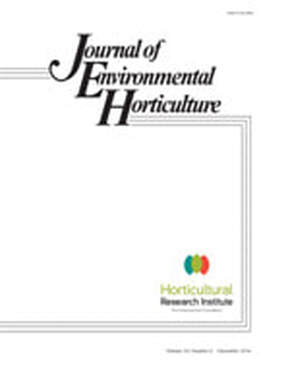 An Investigation of the Impact of Compost Tea Applications on Turf Quality and Soil Microbial Activity March 2023 Link Here Want to make your neighbors green with envy over your lush green lawn? Of course you do!!! (We at TeaLAB are actually proponents of front-yard gardens, wildflower habitats, and xeriscaping where appropriate, however understand that there is a time and a place for everything including a thick and rich green carpet to lay, play, or dance upon). Well lucky for your bare feet and big ego, compost tea once again has been shown to help. To see how tea affects turf-grass, a team of researcher in the great state of Texas designed an experiment using Bermuda grass and compost tea made by Texas State University from cafeteria waste, grounds maintenance waste, and wood chips. They bubbled 4 gallons of the compost in 200 gallons of water, along with molasses and seabird guano (Chilean Nitrate). This tea was then applied to treatment plots at two Texas State University sites, one being a highly trafficked, patchy field, the other a less trafficked, more evenly covered park site. There were four treatments: 1) Irrigation water plus compost ea 2) Compost tea only 3) Irrigation only 4) No tea, no irrigation. The tea was applied by hand using a watering can four times through the early spring growing season. After approximately three months, the Bermuda grass plots were assayed for their turf quality (Color, Density, Uniformity, Percent Living, & Texture). The measurements were repeated at random locations through the trial area so that there would be enough data to have reliable statistics. And guess what? Weedeaters be damned, the compost tea plus irrigation plot did the best. Better color, denser, more uniform, vivacious, good texture, across the board the grass that received compost tea plus sufficient water was by far the best looking, and likely best feeling on your bare feet (side note: Texas U should add "Bare Feet Feel" parameter to their turf quality index). The sites that received no irrigation all fared the worst, which makes sense, grass is thirsty. The second best overall was the irrigated only treatment. Clearly, turf takes to tea. What do we learn here? That lawns-smiths worldwide can reduce the need for chemicals and improve their craft by utilizing the many microbes found in compost and the teas made thereof. They say everything is bigger in Texas, now greener too. Thanks Texas U!!! 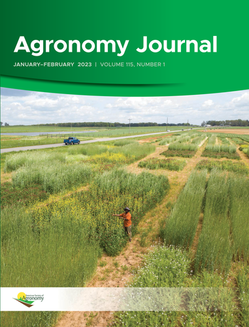 Reducing the Adverse Effects of Salt Stress by Utilizing Compost Tea and Effective Microorganisms to Enhance the Growth and Yield of Wheat (Triticum aestivum L.) Plants February 2023 Link Here Donuts, cakes, pastries of all shapes, sizes, crispiness, and colors owe their carb-laden glory to the humble wheat plant. If we are to survive on this planet and have bread, we must do everything we can to help the cultivation of this croissant producing crop. Thank goodness for the ag researchers at King Khalid University in Saudi Arabia. These bagel saving scientists wanted to see how using compost tea and/or a group of known beneficial organisms (Effective Microorganisms, EM) helps the growth of wheat in soils with high sodium content. Sodium in soils is an increasingly important problem to tackle if we want to keep eating food. The experiment consisted of four groups of wheat plant plots, a control group that did not have tea or EM, and 3 treatments: Compost Tea, EM, and Compost Tea + EM. The EM consisted of Azospirillum brasiliense, Pseudomonas koreensis, and Bacillus circulans. The tea preparation was not described in this paper, which is unfortunate. The EM was applied with peat moss as the carrier at the time of seeding. Compost tea was applied as a foliar spray at 30 and 50 days after seed sprouting. The experiment was ran for two different seasons so that there was enough data to produce reliable statistics. At the end of the trials, the plants were assessed for growth, yield, uptake of nutrients, photosynthesis rates, and metabolic changes. The researchers found that virtually all parameters were positively affected by the three treatments as compared to the control group. The plants grew better, produced more usable wheat grains, more nutrients were taken up, antioxidant enzymes were increased, and the plants were more efficient at photosynthesis. The combination of the two, tea and EM, were generally the best performing, while tea was in second place with EM as a close third. This goes to show that tea can really make a huge impact on crumpet production. Thanks Saudi scientists!!! Our late night buttermilk donut runs are forever indebted to you steadfast commitment to our gluten habit. 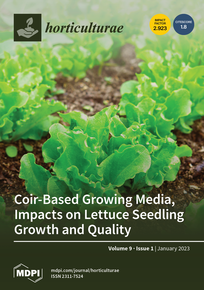 Enhancement of Antioxidant Potential, Phytochemicals, Nutritional Properties, and Growth of Siphonochilus aethiopicus (Schweinf.) B.L.Burtt with Different Dosages of Compost Tea February 2023 Link Here Humans have been using plants as medicine since the dawn of time. For example, cave-people were eating chamomile and yarrow, two bitter tasting plants, leading anthropologists to conclude they were using these plants for their medicinal value. In another instance a neanderthal was found to have poplar bark residue on his teeth, near what was likely a very painful dental abscess. Poplar bark contains salicylic acid, the active ingredient in Aspirin. These plant medicines are found in abundance around the world. That is not the case for all of these substances however. This research studies an increasingly endangered plant, African Wild Ginger. Natal Ginger, as it's also called, is known to have a number of human-health benefits. This has led to over-harvesting in the regions it is native to. In order to maintain wild populations, this plant must be cultivated commercially so that nature is left with some for herself. Siphonochilus aethiopicus is the scientific name of this purple-petaled flowering plant that is known to treat colds, coughs, flu, inflammation, asthma, headaches, pain, and nausea (research has shown potential anti-cancer properties as well). Researchers wanted to know if applying compost tea to the plant would help it grow, and/or improve the medicinal qualities. To do this they made compost tea using spent mushroom compost, aerobically in tap water, brewed for 24 hours. This tea was applied only once, at several different concentrations, to ginger starts that had been growing in rhizome friendly potting soil. The plants were allowed to grow for 20 weeks in a controlled greenhouse in Cape Town, South Africa. After the 20 weeks of growth, growth and medicinal quality was documented and compared between treatment groups. For growth, aspects like rhizome (root) diameter, leaf length, plant height, rhizome weight, and chlorophyll content were measured. Medicinal quality was indicated through flavanol and polyphenol content, Antioxidant capacity, ferric reducing capacity, and oxygen radical absorbance capacity. Not surprisingly (if you have been keeping tabs on teas), the ginger grown with compost tea outperformed the ginger that was grown with just water. The researchers conclude that any application of compost tea can "optimize mineral accumulation, phytochemicals, and antioxidants". The growth parameters were not significantly affected, so the plants did not grow drastically bigger, but did produce better medicine. The highest medicinal qualities were fond in the non-diluted compost tea. And because compost tea is a low cost, earth-friendly "bio-fertilizer", the researchers indicate that using compost tea is a part of a sustainable path forward for African Wild Ginger cultivation. We humans may be technologically advanced in a lot of ways, but our physiology is not far from that of our neanderthal ancestors. The plants that helped them stay fit and healthy will do the same for us. Thanks to the researchers from Cape Peninsula University for showing us that compost tea is good for the plants that are good for us. 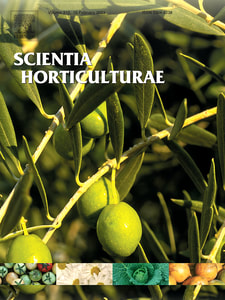 Compost tea as a sustainable alternative to promote plant growth and resistance against Rhizoctonia solani in potato plants Scientia Horticulturae June 2022 Link Here If there is anything the world needs right now it is better quality potato chips and french fries. This is not debatable. In order to move the needle forward, a group of scientists from the University of Salamanca in Spain, developed a potato growth trial that looked at how the delicious dirt nuggets performed when given compost tea. The aerated compost tea was made with green-waste materials (tree and grass clippings) that went through a full thermophilic composting cycle, producing a stable, finished, rich black gold . The study was done with both pot and field experiments, and with and without the addition of the disease causing fungus, Rhizonctonia solani. In these experiments, various concentrations of compost tea were watered into the pots of field. In the pots, 9 plants were transplanted, and into the fields about 60 small potato tubers were planted per square meter. They also performed a sprouting trial, where pieces of potatoes (french fry seeds?) were planted into a sterile potting soil mixture, watching for how quickly and robustly the potato pieces sprouted. The pots got two applications of tea, while the field was irrigated with tea every two weeks. The potato pots and the field plants were allowed to grow for about 4 months, or until the above ground plant material began to die off and indicate the potatoes below were ready for pickin', The sprouting trial ran for 1 month. After counting sprouts, harvesting the finished tubers, weighing, measuring, frying, and (probably) tasting, the scientists used statistics to conclude that compost tea did indeed improve and protect the potatoes. The tater-tot-debilitating disease Rhizoctonia had its severity drastically reduced. The quality of the potatoes was improved by tea as well, seen as increased moisture content, and, most importantly, better fry-ability (seriously, bad potatoes discolor when they are turned to chips, the tea-treated potatoes were of better fry quality). Regarding the sprouting trial, the compost tea treatment caused more sprouts to arise from the potato plugs, with more leaves, vigor, and height. Most importantly, yields were increased. More potatoes is good for everyone. The Spanish scientists have contributed to the ever growing body of research on fried potatoes. This is the sort of information that will lead us into a productive, potato-rich future. Thanks to those who put in the effort necessary to increase our ability to enjoy the simple, yet globally important tubers. Look out for a future blog post on improving ketchup quality through tea- treated tomatoes. 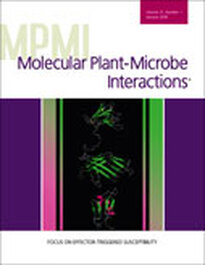 Altering Plant Defenses: Herbivore-Associated Molecular Patterns and Effector Arsenal of Chewing Herbivores October 2017 Molecular Plant Microbe Interactions Link Here Plants and bugs have been battling an evolutionary arms race since the early Cambrian period some 500 million years ago. Plants evolve a useful defense strategy, bugs evolve a way around it, plants evolve further, bugs catch up again, and so it has continued and will continue until our sun supernovas. One fascinating leg of this arms race has to do with a plant's response to insect excrement, aka, frass. Frass is similar to worm castings in that it contains nutrients that plants can use, as well as microbes that were part of the insect's gut flora, as well as other insect-produced compounds. The frass-associated microbes and compounds have been shown to cause plants to stimulate internal defense systems that make plants less palatable to hungry insects. The name given to these defense systems is Herbivore-Associated Molecular Patterns. The term "Patterns" is used to indicate the dynamic metabolic pathways that take place involving multiple bio-chemical compounds. The research article this post links to is a review of scientific literature that identify the molecules, microbes, metabolomics, and modes of action that frass has been shown to affect. And it's not just frass that stimulates a plant's defense system, it's also an insect's saliva, eggs, chewing, even crawling. It makes perfect sense that a plant has senses to sense insect presence. The issue is, the pests also have senses that detect the defenses, thereby initiating further the development of the plant-pest arms race. You can find insect frass here (Beetle Juice) that can be used as a fertilizer through soil amending, top dressing, or as part of a biologically rich compost tea. Thanks to all the scientists out there that bring this useful knowledge to light. Here's to evolving our way into a sustainable future. 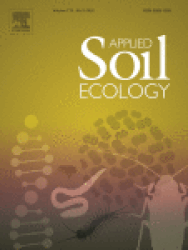 Response of cotton root growth and rhizosphere soil bacterial communities to the application of acid compost tea in calcareous soil Applied Soil Ecology May 2022 Link Here Have you ever wondered about how your underwear affect the global ecosystem? Who hasn't??? Well thankfully there are scientists out there that care about these kinds of things. Specifically, the scientists in this study out of Shihezi University in Xinjiang China are looking at cotton and how its growth is affected by compost tea. Nearly 80% of China's cotton is grown in Xinjang, and in 2021 China grew more cotton than any other country, some 6.4 million tons. Talk about a great place to implement sustainable farming practices. The research in this study was done on "calcareous" soils, simply put, soils high in calcium, which are typically also high in pH. The researchers wanted to know if an acidic compost tea would have a beneficial affect on plant growth by freeing up nutrition and modifying the soil microorganisms. To make an acidic compost tea, organic chicken manure was mixed with a low pH solution of phosphoric acid. The compost tea ended up with a very low pH of 2.7. The cotton-science researchers applied this tea to cotton plants, comparing it to applications of a liquid organic fertilizer made from chicken manure, and to an unfertilized group of plants as well. What did they find? Compost tea significantly promoted the growth and development of cotton roots, as well as led to a higher amount of beneficial bacteria present in the soil. The beneficial microbes in the tea were also correlated with higher amounts of available nutrients. If we sew it all together, we see that the low pH tea improved root growth while also improving the soil microbiota. While this study did not go as far as to look at the yield of the cotton plants, it can be suggested that the bigger roots mean bigger fruits(-of-loom). Thanks to the intrepid scientists across the globe who are helping the world be more sustainable in our attire. Hats off to all of us.  CONVERTED OLIVE MILL WASTES TO COMPOST TEA WITH BIOLOGICAL TREATMENT AND ITS IMPACT ON GROWTH AND PRODUCTIVITY OF MANZANILLO OLIVE TREES Cairo University June 2017 (link here) What happens when you apply compost tea, made from olive waste compost, back on to olive trees? Great question huh? It's what a group of Egyptian researchers at Cairo University's Agricultural Research Center asked as they embarked on another adventure in organic agriculture! The researchers made compost with the leftovers from olive production, mainly olive pomace (waste material after pressing olives for oil). Along with the compost, the researchers wanted to see if they could make use of "olive vegetable water" (another waste product of olive oil production) as a fortifying ingredient for their tea. They made several batches, with and without olive water, and some with added beneficial microbes. They then aerated the compost/water/microbe mixtures in order to make them into true compost teas. The researchers then applied the teas at different rates to a selection of tester Manzanillo olive trees in an orchard, some 20 miles northwest of Cairo. The tea was watered into the soil twice a week for four months. Growth response of the trees, as well as quality and characteristics of the olive yields were measured and analyzed. Incredibly, the scientists found that all trees that received any compost tea performed significantly better in regards to: the highest shoot length, number of leaves, fruit diameter, flesh/fruit weight, flowering density, perfect flower %, fruit set %, yield, olive oil content, leaf nitrogen and potassium content as well as the highest net profit. Though all tea treatments were effective, though the most efficient and net-profit maximizing treatment was: compost tea at the rate of 50% plus 50% olive vegetable water and added beneficial microorganisms. Using compost tea in a production system makes perfect sense. Waste streams are turned back into valuable resources. Hats off to the Manzanillo olive enthusiasts pushing our collective knowledge onward into a sustainable future.  Effects of Compost tea on Productivity of Green bean (Phaseolus vulgaris L.) Varieties in Sudan Savanna of Nigeria December 2021 Link Here Did you hear the news!?! How could you not? It's the hippest thing to happen to green beans since grandma's vegan casserole. A team of researchers in Nigeria have shown that compost tea makes green bean plants grow bigger, healthier, and more productive. Here's how they did it: The team of green bean scientists grew several plots of the legume during the rainy season of 2018 in Nigeria's Sudan Savanna. Compost Tea was applied at a low and high rates, 10 and 25 days after seeds were sown. Interestingly the tea application rates were extremely low, the high rate being only 25 gallons of tea over one hectare of land mixed in irrigation water and applied as a soil drench. The control garden area was given water without any tea added. At the time of harvest a number of productivity related characteristics were measured. And guess what.... The researchers found that using compost tea at the low and high rates both significantly improved growth characteristics. The bean plants grew taller, had more branches with more and bigger leaves, and they yielded bean pods that were longer and heavier. More and bigger beans, plain as day. This study shows that a little compost tea goes a very long way. Thanks to the hard working ag-scientists of Nigeria for contributing their part to the ever evolving understanding of compost tea. 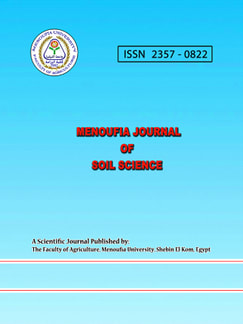 EVALUATION OF APPLICATION METHODS OF COMPOST TEA AND FULVIC AND HUMIC ACIDS AND THEIR EFFECTS ON PLANT GROWTH Menoufia Journal of Soil Science September 2021 Link Here The great science minds of the world have done it again. This time it's a group of agri-heros out of Menoufia, Egypt. The scholars wanted to see if how they went about applying compost tea, humic acid, or fulvic acid affected the yield and quality of beans and potatoes, while also seeing if they could reduce the need for conventional fertilizers. To do this they planted farm plots with beans or potatoes, half of those plots received the recommended application rate of conventional fertilizer, the other half received half of the recommended amount. Then, those plots were divided up and treated with either compost tea, humic acid, or fulvic acid. Some of the fields were not treated and were used as the control group to compare results against. Within those groups, the experimenters applied the tea/humic/fulvic via either foliar spray, soil drench, or a combination of the two, of which we affectionately refer to as the "sprench". After 60 days, the yield and quality of the produce was determined. It was shown that the application of...... you guessed it!!! compost tea was the most beneficial. And the application method that proved best was.... the sprench!!! According to the paper sprenching compost tea "resulted in a high yield, quality and reducing the environmental pollution as a result from reducing the additions of the mineral fertilizer ". Increasing yields, increasing quality, and decreasing fertilizer usage, sound like a win, win, win. Thanks to our Egyptian compost-counterparts for moving us forward along the path to sustainability. 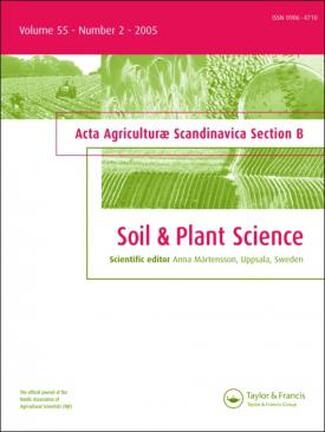 Acidic compost tea enhances phosphorus availability and cotton yield in calcareous soils by decreasing soil pH June 2021 Link Here Article Summary By: Maya Shydlowski In a fresh study published out of the Shihezi University College of Agriculture in China, researchers tested the effects of compost tea on cotton crops in calcareous soils. Calcareous soils contain high levels of calcium carbonate, which limits the utilization of phosphorus in soil. In these soils, phosphorus accumulates but is unable to be used because it is made immobile, or unavailable. Phosphorus then becomes a limiting factor in crop growth, a problem agriculture has been facing and trying to solve for decades. It is known that the pH of the soil effects the availability and uptake of various nutrients in the soil, including phosphorus. Lower pH indicates a greater acidity in the soil. The acidity helps to increase the mineralization of phosphorus. Mineralization is the process by which organic phosphorus is turned into forms easily accessible and taken up by plants. Calcium carbonate in calcareous soils raises the pH, which is why its presence in soil limits phosphorus uptake. Compost tea is generally acidic due to its components and fermentation process. Therefore, compost tea has the potential to decrease the pH of the soil and increase the mineralization and uptake of phosphorus. In this study, the researchers tested just that: They attempted to amend the effects of calcareous soils by applying compost tea. Multiple plots were set up with different management treatments to test this. One pot had an organic fertilizer, another had compost tea, another contained phosphoric acid, and another was an unfertilized control pot. Each had different pH levels, with the lowest being the phosphoric acid, followed by the compost tea, organic fertilizer, and control. These treatments were applied to potted cotton plants and fertilized over multiple months. The researchers took soil samples regularly and analyzed the plants post-harvest. They recorded the amount of phosphorus found in available, moderately available, and unavailable forms. The results showed that the treatment types had significant effects on the phosphorus content of the soil and the crops. Applying organic fertilizer, compost tea, or phosphoric acid decreased the pH of the soil. Because of this, these amendments also changed the composition of the forms of phosphorus in the soil. Both the phosphoric acid and compost tea treatments had higher levels of mobile, available phosphorus. The experiment also showed that the treatments affected the growth and yield of the cotton plants grown. Compost tea significantly increased the plant height and leaf number compared to the control treatment. The compost tea treatment had the highest cotton yield, followed by the phosphoric acid treatment, organic fertilizer, and then control. The phosphorus concentrations in the plants were significantly higher in the compost tea and phosphoric acid treatments, which corresponds to the yield findings. Overall, this study found that the acidity of the soil amendments made the greatest difference in phosphorus availability and uptake. These results show that using acidic compost tea as a fertilizer in calcareous soils can increase phosphorus uptake, improving crop growth and yield. This has positive implications for agriculture in the future. Hopefully growers will turn to compost tea as a viable amendment to better their soils and their crops.
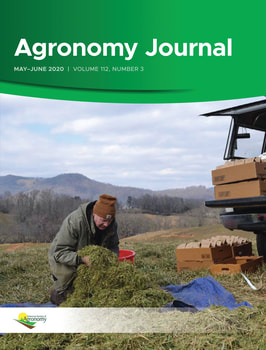 Compost Tea Induces Growth and Resistance against Rhizoctonia solani and Phytophthora capsica in Pepper April 2021 Link Here Need a reason to be more amazed with compost tea? Faculty at the University of Salamanca in Spain have been studying the effects of compost tea on pepper crops, especially their resistance to Rhizoctonia solani and Phytophthora capsica, pathogens common in pepper crops. Ten different treatments were set up to test how various factors in combination with the compost tea affected the pepper plants’ growth and pathogenic responses. The compost tea solution that this team worked with was based off composted green waste, which is basically recycled remnants of yard trimmings and other organic sources. They analyzed multiple samples of the compost tea for its nutritional and microbial composition, as well as some other chemical properties. The researchers first performed in vitro assays, which are tests that specifically target disease and are done on isolated systems. This is helpful in identifying factors and their effects on specific characteristics. The researchers also performed in vivo assays, which are tests on entire plant systems. This is more beneficial in discovering real-world implications. The researchers grew one set of pepper plants with no compost tea or pathogen introduction and another set of plants with compost tea but no pathogen introduction. They also grew plants with and without compost tea and with each pathogen introduced after transplanting. Their set up would allow them to observe how the compost tea affects plants diseased with these pathogens. At the end of the experiment, the researchers concluded that the compost tea successfully reduced pathogenic growth and increased plant growth, even when pathogens were introduced to the system at different times. Based on their analysis of the composition of their compost tea and based on others’ research, they decided that the compost tea most likely improves these characteristics because of the nutritional value and microbial makeup of the compost tea. Their solution contained multiple microbes known to help plants fight off these pathogens. Additionally, nutrients measured in the solution, especially nitrogen and potassium, were sources of fertilization for the growth and resistance of the crops. Their in vitro assays showed similar results of pathogen growth in the presence of the compost tea, and therefore the microbes that exist within it. Overall, this experiment shows the potential for compost tea in pathogen resistance as well as plant growth and yield. It highlights the importance of microbial activity in plant life and in agricultural systems. The researchers did say that their compost tea was not a complete source of nutrients for the peppers, so it would be interesting to see how additional fertilizer sources would impact these findings. Just another reason to research organic systems and to use compost tea! R&D Piece Authored by: Maya Shydlowski  fAntifungal Effect of Volatile Organic Compounds from Bacillus velezensis CT32 against Verticillium dahliae and Fusarium oxysporum December 2020 Link Here Here's a doozy. A group of scientists in China wanted to look into whether or not microbes in compost tea have the ability to ward off disease-causing fungi by producing volatile, anti-fungal compounds. Volatile Organic Compounds (VOCs) are substances that freely dissipate into the environment. You have probably heard about low-VOC paints, which are paints that do not release toxic fumes, sparing the brain cells of many hardworking painters. In this experiment, the scientists were looking for bacteria that were good at producing VOCs in order to stave off the growth of phytopathogenic fungi. The researchers first made compost from corn stave (which is the remainder of the corn crop after the cobs and the kernels have been harvested) and cow manure. They used 1 part manure to 5 parts stave. This was turned every seven days for five weeks. Then this compost was used to make an aerated tea. A sample from the tea was taken, and then diluted and plated onto petri dishes so that individual colonies of bacteria could be isolated. The individual colonies were then identified using PCR, and assayed for biofungicidal VOC action. This was done by growing the isolated microbes alongside pathogenic fungi. The bacteria and fungi were separated so that the only thing they shared was air. The growth, or lack thereof, of the pathogenic fungi was used to determine if the bacteria was producing an inhibitory VOC. The scientists then selected the most effective VOC producing microbe, which turned out to be the one and only, Bacillus velezensis strain CT32. Once the researchers had their VOC star-microbe, they looked further at the VOCs being produced. They found that the bacteria was making 30 unique VOCs, 6 of which had never been seen in bacteria or fungi before. Then the scientists went even further, separating out each VOC and testing them individually for the inhibitory action against fungi. Eight of the thirty compounds proved to have anti-fungal properties. The scientists propose that this microbe, and others like it, could be used as biofumigants in order to help prevent vascular wilt infections from pathogenic fungi. There was a lot of science done in this experiment. The researchers kept looking further and further and finally were able to make a definitive statement about what is happening with our teas and why they work the magic that they do. Thank you very much to the researchers in China for furthering our understanding of this amazing microbial world.  Markedly different gene expression in wheat grown with organic or inorganic fertilizer September 2005 Link Here This paper is a little old in science years, but extremely important nevertheless. A group of Ag-Researchers in the farming town of Rothamsted in southeast England looked at the genetic expression of organically vs. synthetically grown wheat grown in 2002, 2003, and 2004, The synthetic fields were fed with Ammonium Nitrate, while the organic fields were fed with Farm Yard Manure. The experiment was relatively simple, however used relatively high-tech genetic profiling machinery. After harvest, genetic expression was assessed in wheat grains from the different fertilizer types. Analysis was done using Polymerase Chain Reaction (PCR) to assess and quantify the RNA found in the grains. The RNA, which is made from codes of DNA, was compared to wheat's known DNA library. The presence of RNA indicates which genes in the DNA had been turned on in order to make the RNA. An elegantly simple example of real world metabolomics, the study of the economy of metabolism. The scientists found that the number of genes transcribed was drastically higher in the Organically grown wheat than in the Ammonium Nitrate grown wheat. Organic wheat had both a higher diversity of genes activated, and a much higher level of expression. The majority of genes identified were expressed some 4-5 times more than their synthetic counterparts. This study shows that there is a significant 0difference in how a plant expresses its DNA in response to it's environment (this is an epigenetic changed based on nutritional environment) The increase in genetic expression has direct correlation to the levels of leftover organic molecules found in plant material. The next step to take with this research is to determine what this diverse chemical signature does to plant growth and subsequently the quality of the final produce. Basically, does more and diverse genetic expression lead to better food and medicine? The current science does seem to support this. So, the next time some tells you that there is no difference between organic and synthetically grown food, you can confidently say otherwise. The reason why those organic strawberries taste better may have to do with the fact that they are utilizing much more of their genome to grow. Thanks science!!! 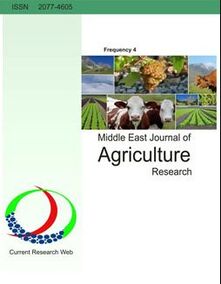 Integration of Some Bio Compounds with Compost Tea to Produce Sweet Corn without Mineral Fertilizers July 2020 Link Here Leave it up to ag-scientists living in a dry, resource limited area to come up with the next newest agriculture solution. A group of researchers wanted to see if they could grow corn at a rate considered successful without using synthetic fertilizers, and instead using a nutrient-fortified compost tea. Compost tea alone carries very little of the macronutrients required for robust plant growth, so the scientists combined the actively aerated compost tea with one of 3 nutrient sources. The nutrient sources they used were: algae extract, azolla (duckweed), or yeast extract. The tea was brewed for 24 hours, then one of the three additives was mixed in. Then the mixtures were applied to plots of sweet corn. There were 5 total plots, one that was fed with a conventional synthetic NPK fertilizer, one with only compost tea, and then three mixtures of tea and additives. The corn was allowed to grow through the season, with growth and yield parameter surveyed at the end of the cycle. This experiment was repeated in two successive years in order to attain substantive data. After the second year's trial the data was analyzed to see if there were any differences between the conventional (synthetic) corn and the compost tea grown corn. Amazingly, the compost tea plus yeast extract plot was found to yield equally to the conventionally grown corn. The dry weight, size, and yield all were statistically no different, showing that tremendous results can be achieved using natural methods. The other tea/additive plots produced 10-20% less corn as compared to the tea/yeast or conventional group. These findings indicate that the relatively simple to produce yeast-extract has the potential to replace costly, and potentially toxic conventional NPK fertilizers, while at the same time contributing to good soil health by using a sustainable approach. The amount of tea and additive used in the experiment was very small in comparison to the amount of NPK fertilizers applied to the field. The costs, both financially and environmentally, are drastically less when using ecologically sound production principles. Thanks to the Egyptian scientists Saad Abou-El-Hasssan, and Heba El-Batran, without the ardent efforts of people like this, our production systems would continue to be stuck using newly-ancient technology, and our food and ecological systems would fall further in peril. So, add some yeast to your brew and thank a scientist!!!! 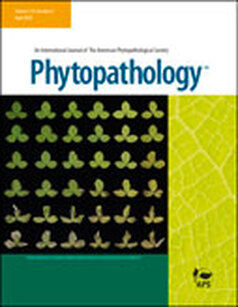 Compost Tea Reduces the Susceptibility of Pinus radiata to Fusarium circinatum in Nursery Production Feb 2020 Link Here Pine trees used for reforestation are grown from seed or tissue culture, taking some 9 months to mature to be transplant-ready. During this period, cultural conditions can increase susceptibility to fungal pathogens. A group of Spanish researchers wanted to see if compost tea provided any protection against these pathogens, specifically the species of Fusarium that causes Pitch Canker. . The scientists looked at several aspects of compost tea and it's affect on the growth and physiology of pine seedlings. The first experiment involved making perti dishes that had compost tea added to them after they cooled so the microbes in the tea were not sterilized by the heat. The scientists then placed a small colony of Fusarium in the center of the dish and watched to see if the colony grew. Not surprisingly (if you have been reading previous blog posts) the dishes treated with compost tea showed a great inhibitory effect. As compared to a control plate (where there was 0% inhibition), tea reduced growth up to 45%. Meaning, that the Fusarium colony grew at about half the rate of the un-treated plate. It was also observed that there was 79% less germination of the fungal spores, thereby reducing the potential for growth even further. This promising data pushed the scientists to research further. Next they wanted to see how tea acted in a real-life situation (petri dish experiments are referred to as in virto whereas "real-life" is in vivo). Pine seedlings were watered with compost tea monthly, and also inoculated with Fusarium spores. The researchers monitored disease severity over a nine month period. And, not surprisingly, again, the plants treated with tea had significantly less internal and external disease symptoms. Furthermore, the tea-treated plants had higher amounts of internal defense compounds, indicating that compost tea helps to bolster a plant's immune system. This study actually had a lot more information than described here, all of it pointed to tea being extremely beneficial as a fungal pathogen preventor. Thanks to the Spanish scientists with arboreal interests for furthering our understanding of compost tea and it's many benefits. Muchas gracias amigos intelligentes!!!! 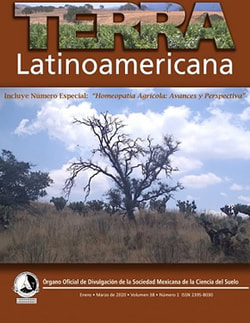 Ecological nutrient solutions on yield and quality of melon fruits Terra Lationamericana January 2020 Link Here Want tastier melons? Who doesn't!?!? Agricultural Scientists in Mexico wanted to see if using natural growing techniques could produce melons equal to or better than melons grown using synthetic fertilizers. To do this experiment, 4 different treatments were applied to melon plants growing in a greenhouse. The treatments were: Compost Tea, Vermicompost Tea, Vermicompost Leachate, and Synthetic Nutrient Solution. The melon were treated weekly and at the end of the season, the harvests were weighed and assayed. Yields, Brix, phenolic content, antioxidant content, and soluble solids were all determined in the laboratory. The scientists found that the yields were all similar, however the nutritional benefits of the natural growing solutions were significantly greater. Higher soluble solid content in the compost tea treatment indicates that the fruits contained more "stuff" and less water. Part of that "stuff" is measured in Brix, which is another word for sugar content. The compost tea had the highest Brix reading of the soluble solids. This translates into sweeter fruits. Combined with the greater antioxidant capacity, it's clear that melons grown with natural methods are tastier and healthier. !!!Muchas gracias a los cientificos por la informacion azuca!!! |
Archives
June 2024
Categories
All
|
Contact Us
Why TeaLAB?TeaLAB is committed to helping people and their gardens to become more self- sufficient, healthier, and productive. Grow your sweetest corn, your biggest watermelon, your tallest quinoa, your tastiest tomato, and your happiest you.
TeaLAB was founded to teach people how to garden organically, so that we can become more closely connected with the land. Our goal has been to simplify growing methods so that gardeners have a positive experience in the garden. TeaLAB is where the garden meets the laboratory. From around the world and into your backyard, our products contain ingredients that are sourced both locally and globally. Using methods both ancient and cutting edge, TeaLAB promotes maximum biology. Grow with TeaLAB. |

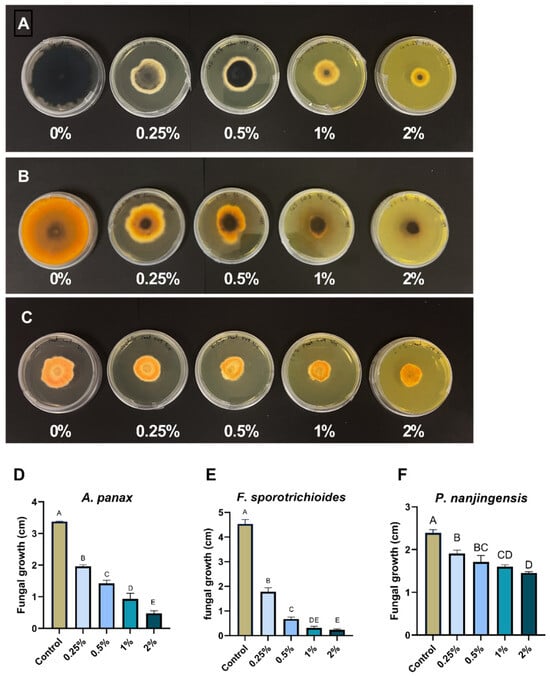
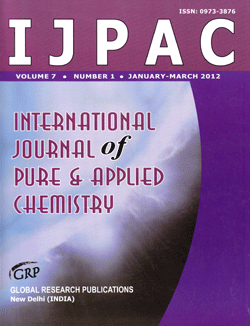
 RSS Feed
RSS Feed
